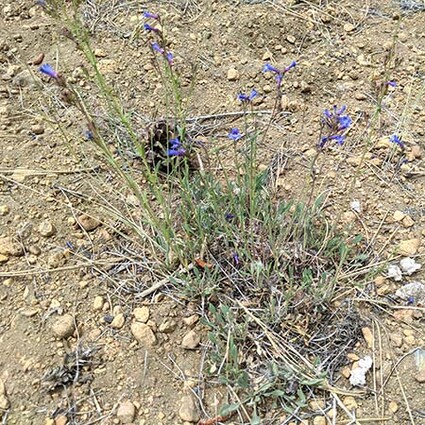Sisters is home to rare botanical treasure
Last updated 7/14/2020 at Noon

Rima Givot
Peck’s penstemon (Penstemon peckii) growing in and near Trout Creek, north of the new Hayden Homes.
With great summer weather and little opportunity to gather inside, people are increasingly looking to nature to find peace, recreation, and entertainment. We are especially lucky to have access to local natural resources that draw so many people to Sisters, including the snow-capped mountains, dark skies at night, and public lands with miles of varied forest ecosystems, from the alpine to the high desert, supporting a rich diversity of species.
Sisters Country is especially fortunate to host a beautiful and rare endemic plant, Peck’s penstemon (Penstemon peckii), which inhabits the ponderosa pine forests in the transition between subalpine and high desert biomes. Listed as a sensitive species by the U.S. Forest Service and the Bureau of Land Management (BLM), and as a species of concern on the Oregon Natural Heritage Program list, Peck’s penstemon grows in open forests with seasonal moisture.
According to a study done by Sisters ecologist Maret Pajutee, its range covers about 485 square miles west and northwest from Sisters around Black Butte and into Camp Sherman.
This dainty plant has deep red, maroon, or green stems, with slender arching green or dark red leaves, and bunches of trumpet-like pink, purple, or blue flowers topping a stem that blooms from June into July.
Peck’s penstemon is similar to its much more common cousin Lowly penstemon (Penstemon humilis), which has more tear-dropped leaves, especially at the base of the flower stalks, and blue to purple flowers.
Both of these flowering species are key sources of food for pollinators like butterflies, bees, flies and hummingbirds.
With only about 247,000 Peck’s penstemon plants in the world, all of which live in Central Oregon, finding them feels like discovering a rare treasure, and as Sisters residents it is important for us to know and care for this wildflower so that we can protect its habitat and preserve local biodiversity. Most Peck’s penstemon plants grow on Forest Service land, but private landowners can also manage their land to enhance habitat and help preserve this unique plant by leaving land in its natural state and supporting the native landscape.
Peck’s penstemon has been documented to grow primarily in temporal moist areas and along waterways feeding the Metolius River and Whychus Creek.
Close to Sisters, Peck’s penstemon generally grows within 50 meters of Trout Creek, an ephemeral stream that intersects Highway 242 just west of Crossroads and traverses Trout Creek Conservation Area, a 160-acre conservation forest owned by Sisters School District and managed to protect Peck’s penstemon habitat between Sisters High School and Tollgate.

Rima Givot
Lowly penstemon (Penstemon humilis) growing in Trout Creek Conservation Area forest and surrounding area.
Trout Creek flows east just north of the Hayden Homes and Ray’s complex, runs under Highway 22, and eventually meets Indian Ford Creek east of Camp Polk road.
Trout Creek is typically dry most of the year between Highway 242 and Indian Ford Creek, flowing only in the winter during sudden warm periods when snow melts and in the late spring.
Preserving habitat and increasing awareness of Peck’s penstemon is important to sustaining genetic diversity and preventing the plant from disappearing altogether. With increased awareness and community support, people can have a positive impact on conservation of this wildflower and sustain enjoyment of this natural treasure. This is the perfect time of year to catch it in flower, and if you are lucky you might even watch a hummingbird or butterfly enjoy its delicious nectar.
















Reader Comments(0)